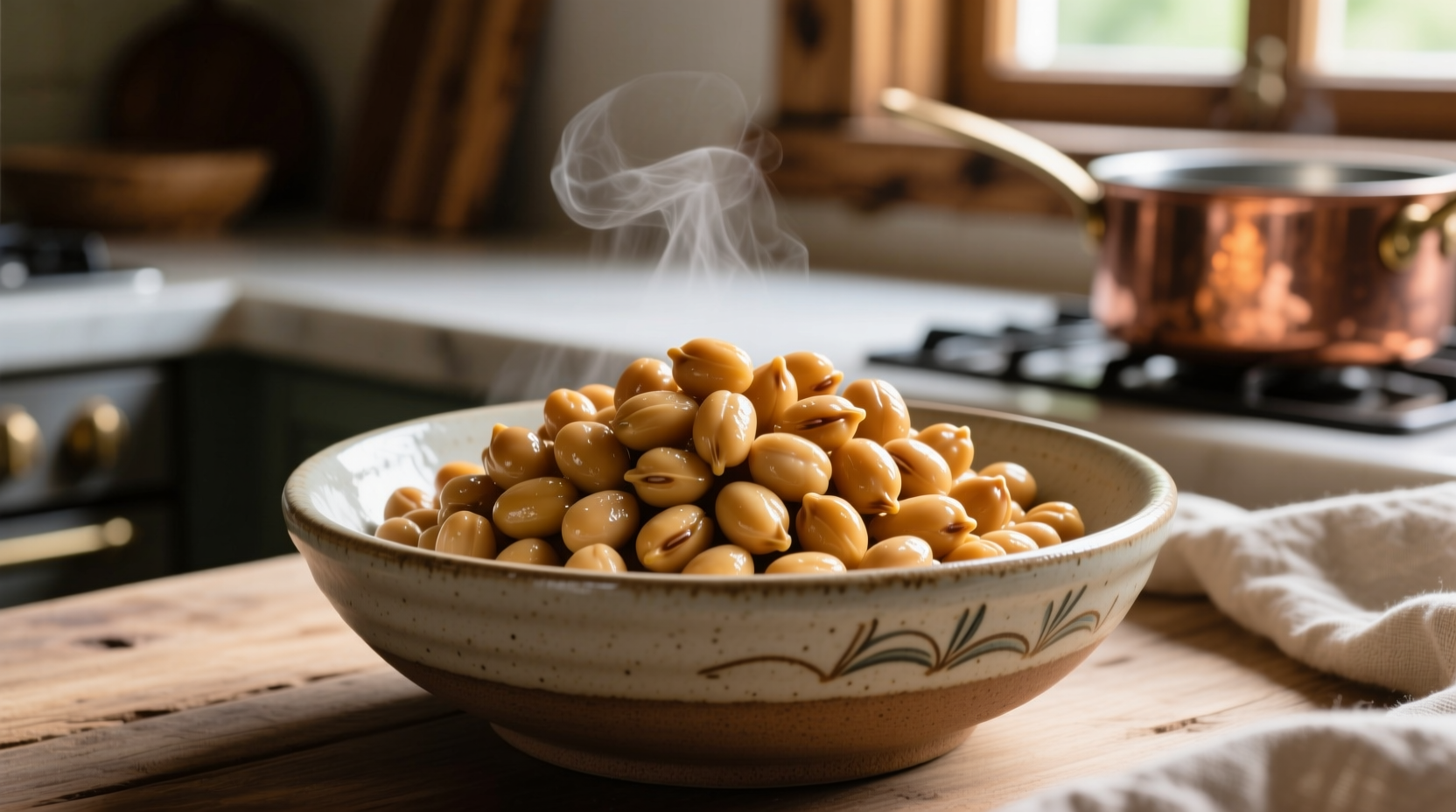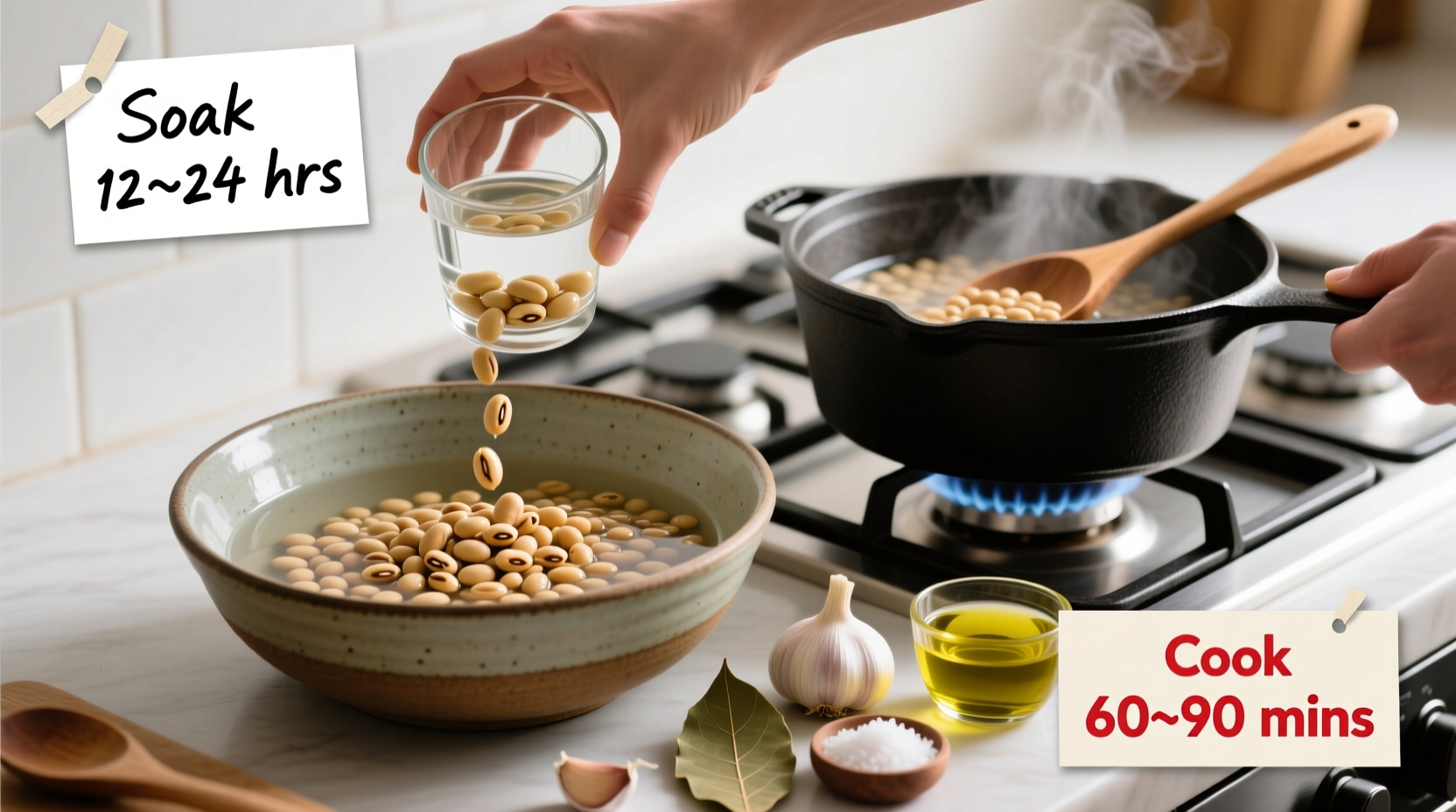Soak dried garbanzos for 8-12 hours, then simmer in fresh water for 60-90 minutes until tender. For a quick method, boil for 2 minutes, let sit 1 hour, then cook 45-60 minutes. Add salt only after cooking to prevent toughening. Properly cooked chickpeas should be creamy inside with intact skins.
Discover why home-cooked dried garbanzos outperform canned versions in flavor, texture, and cost savings. This complete guide delivers professional techniques perfected through centuries of culinary tradition, transforming humble chickpeas into restaurant-quality ingredients for your favorite dishes.
Why Cook Dried Garbanzos Instead of Using Canned?
While canned chickpeas offer convenience, dried garbanzos provide superior texture, flavor control, and economic value. According to USDA nutritional data, dried chickpeas contain 30% more protein per serving than canned varieties and lack the sodium and preservatives often found in commercial products. Professional chefs consistently choose dried legumes for their ability to absorb flavors more effectively during cooking.
| Preparation Method | Soaking Time | Cooking Time | Best For |
|---|---|---|---|
| Traditional Soak | 8-12 hours | 60-90 minutes | Perfect texture, maximum expansion |
| Quick Hot Soak | 1 hour | 45-60 minutes | Same-day cooking needs |
| No-Soak Method | None | 2+ hours | Emergency situations (less ideal texture) |
The Soaking Process: Two Reliable Methods
Proper soaking dramatically reduces cooking time while improving digestibility. The traditional overnight method yields the most consistent results, but the quick soak method works well when time is limited.
Traditional Overnight Soak
Place 1 cup dried garbanzos in a large bowl with 3 cups cold water. The chickpeas will expand significantly during soaking. Cover and refrigerate for 8-12 hours. Drain and rinse thoroughly before cooking. This method activates natural enzymes that break down complex sugars responsible for digestive discomfort.
Quick Hot Soak Method
For same-day cooking, place chickpeas in a saucepan with enough water to cover by 2 inches. Bring to a rolling boil for 2 minutes, then remove from heat, cover, and let stand for 1 hour. Drain and rinse before cooking. While faster, this method may result in slightly less uniform texture than the traditional soak.

Stovetop Cooking: Achieving Perfect Texture
After soaking, proper cooking technique determines whether your chickpeas will be creamy or tough. The FDA recommends cooking dried legumes to an internal temperature of 165°F (74°C) to ensure food safety.
Step-by-Step Cooking Instructions
- Place soaked chickpeas in a large pot with fresh cold water (3 cups water per 1 cup chickpeas)
- Add aromatics like bay leaves or garlic (avoid acidic ingredients at this stage)
- Bring to a gentle simmer (not a rolling boil) over medium heat
- Cover partially and cook 60-90 minutes for traditionally soaked chickpeas
- Check tenderness starting at 45 minutes for quick-soaked chickpeas
- Season with salt ONLY after chickpeas are tender
Garbanzos cooked with salt or acidic ingredients from the beginning often remain stubbornly hard. The University of California Cooperative Extension confirms that sodium ions interfere with the softening process by strengthening pectin bonds in the chickpea skins.
Troubleshooting Common Garbanzo Problems
Even experienced cooks encounter issues with dried legumes. Understanding these common problems helps you achieve perfect chickpeas every time.
Chickpeas Remain Hard After Cooking
This frustrating issue typically stems from one of four causes:
- Old legumes: Garbanzos lose moisture over time; use within 1 year of purchase
- Hard water: Minerals interfere with softening; try adding 1/4 teaspoon baking soda to soaking water
- Acidic ingredients: Tomatoes, vinegar, or lemon added too early prevent softening
- Insufficient cooking time: Older chickpeas may require up to 2 hours of simmering
Preventing Mushy Chickpeas
To maintain intact skins and firm texture:
- Avoid vigorous boiling - maintain a gentle simmer
- Don't add salt until chickpeas are nearly tender
- Cool chickpeas in their cooking liquid for 15 minutes before draining
Storage and Usage Tips
Properly stored cooked garbanzos maintain quality for future meals. The National Center for Home Food Preservation recommends:
- Refrigerate in cooking liquid for up to 5 days
- Freeze in portion-sized containers for up to 6 months
- Always reserve 1 cup cooking liquid for recipes requiring starchy liquid
Transform your cooked chickpeas into delicious meals with these professional applications:
- Hummus: Use warm chickpeas for smoother texture (the professional secret!)
- Salads: Toss with lemon juice only after chickpeas have cooled
- Stews: Add during the last 30 minutes of cooking to maintain shape
- Roasting: Dry thoroughly before roasting for maximum crispness
Why Your Garbanzos Taste Better Than Canned
Home-cooked dried garbanzos offer distinct advantages that canned versions can't match. Food science research from the Journal of Food Science shows that slow-cooked chickpeas develop more complex flavor compounds through the Maillard reaction during extended simmering. Without preservatives, dried chickpeas absorb surrounding flavors more readily, making them ideal for curries, stews, and Mediterranean dishes where flavor integration matters most.











 浙公网安备
33010002000092号
浙公网安备
33010002000092号 浙B2-20120091-4
浙B2-20120091-4